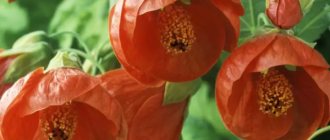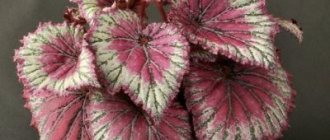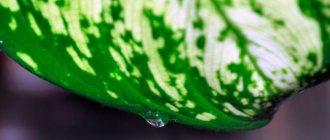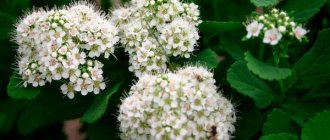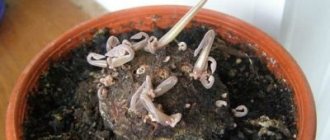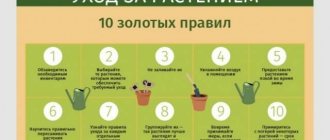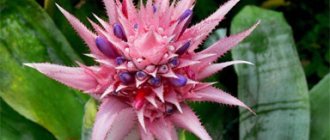Popular types
Decorative peppers have several types and varieties. Colombian (conical), angular (Peruvian), cayenne, pubescent, Chinese, annual, long (pod-shaped). Capsicum peppers are most often hidden under the name decorative.
According to the ripening period there are:
- Early ripening . The fruits ripen 65-100 days after germination.
- Mid-season . The harvest is obtained in 100-120 days.
- Late ripening . Peppers of this variety ripen after 120-150 days.
The optimal height of an ornamental pepper bush intended for home growing is considered to be 30 cm, but you can also choose very miniature bushes 15 cm high.
Pepper varieties are sweet, bitter, spicy and very hot.
There are not only bitter, hot, spicy varieties. There are sweet indoor peppers. It all depends on the amount of capsaicin alkaloid contained in their placentas. It is this alkaloid that causes the burning and bitter taste of the fruit.
Annual
Annual capsicum grows to an average height of 35-55 cm. At the base the trunk is woody, and above it becomes herbaceous. Inflorescences and fruits are formed in stem branches. Flowers can be single, collected in inflorescences or paired. They can self-pollinate or cross-pollinate. The root is branched, taproot.
Representatives of annual peppers
The fruit is a berry, false polyspermous. It can be two to four-locular, has a different shape (narrow, long or spherical flattened). The size can be different, weight up to 200 g, the color is very diverse, yellow or red are more common. The fruits can be directed up or down. Peppers with fruits directed upwards look more original.
The annual pepper, which is called red, as well as paprika, vegetable, capsicum, is a variety with a sweetish taste, but it also contains spicy representatives (subspecies of chili peppers, read about their benefits here). The peculiarity is that after fruiting the plant dries out. The most famous representatives of the species are Tipin, Cherry Bomb, Siberian Prince, Redskin.
Shrubby
Shrub pepper (cayenne, chili) is a perennial hot variety. The plant has leaves in the shape of an ellipse, they taper on both sides. The color is rich green, glossy with pronounced veins. The fruit is a narrow, blunt-ended pod that turns bright red when ripe.
- Cayenne
Carmen
Shrub peppers
An excellent type of ornamental peppers, suitable for growing on window sills or enclosed balconies. Height - 15-45 cm, bushes are distinguished by dense foliage and a large number of branches. During fruiting it is covered with a large number of burning fruits. Up to 50 pieces can grow on one bush at the same time. The best varieties are considered to be Queen of Spades, Salute, Carmen, Ogonyok.
Chinese
Peppers of this species are not taller than 50 cm. The leaves are pistachio-colored, ovoid, slightly wrinkled. It blooms with white flowers with a slight greenish tint. It grows slowly, but has good fruiting.
Devil's tongue
The fruits are very pungent and pungent. The most popular representatives are the Devil's Tongue, Santa Lucia.
Berry-bearing
Berry-bearing pepper with a spicy taste. Received its name for the unusual shape of the fruit. Bush up to 80 cm long.
Lemon candy - berry-bearing pepper
pubescent
Hairy (aka fluffy) pepper. The leaf blades are covered with villi. It is recommended for open ground, as it can reach a height of 4 m; at home, with timely pruning, you can form a compact bush.
pubescent pepper
Suitable for consumption raw, although it tastes quite sharp.
The best varieties of decorative peppers
It should be said right away that not all peppers can be grown at home. Special varietal seeds will be required. Several dozen varieties of compact peppers are known, most of them can be eaten.
Phoenix
The most popular varieties of decorative pepper are shown in the table:
| Variety name | Characteristic |
| Jellyfish | The lush bush grows no higher than 30 cm. The fruits weigh up to 5 g, are medium pungent, bright red, beautifully arranged with the tips up. |
| Pepper Aladdin | A half-meter bush with beautiful peppers that change color as they grow. The taste is very spicy. On Aladdin bushes up to 35 cm high, 105 days after germination, multi-colored cone-shaped peppers up to 3 cm long appear. |
| Small miracle | Medium-sharp decorative variety for indoor growing. On thirty-centimeter bushes, peppers grow upward, weigh on average 5 g, and turn red when fully ripe. |
| Sirius | A variety of Dutch decorative peppers. The bush is miniature (up to 20 cm). It grows in an apartment for up to 7 years, and during fruiting it is covered with a large number of small fruits. |
| Phoenix | A variety of bitter peppers with a spreading bush that bears fruit for a long time. The fruits are cone-shaped, medium pungent, growing upward. |
| Baby Yellow | Sweet variety, high yield. Bushes up to 50 cm, fruits in the form of a truncated cone, yellow-orange when ripe. |
| Kuzya | A small bush 35 cm long, the pods are juicy, sweet, aromatic. Color ranges from rich green to red. |
| Ogonyok | Ogonek is one of the most popular varieties. Gardeners love it for its beautiful, bright fruits weighing 25-50 g, up to 5 cm long. The harvest is harvested after emergence after 4 months. |
| Flame Basket F1 | An early-ripening, branching variety of indoor hot peppers. The fruits are conical in shape and change color when ripe from fuchsia to fiery red. During the color transition they become creamy and orange. |
| Black Pearl | Hot pepper with unusual (black) leaf color. The spherical fruits resemble black pearls and are slightly elongated. When ripe, they change color from deep purple (almost black) to red and pink. In pots, Black Pearl grows up to 50 cm. |
| Garda Firewax | This variety has compact bushes that do not grow higher than 30 cm and bear fruit with fairly large fruits up to 5 cm. The peppers grow with their sharp ends upward. The bushes are covered with green, crimson, purple, and red fruits. |
| Explosion Amber | A small ornamental bush (up to 30 cm) with deep purple leaves, on which peppers grow and ripen in 115 days. As they grow, they change color. Scarlet, pink, purple compositions will bring aesthetic pleasure. |
| Apache | A berry-bearing type of pepper with a flattened fruit shape. |
| Firework | Indoor hot pepper that feels great on the windowsills of the house. The round bushes are quite small in size (20-25 cm). Cone-shaped peppers with a slightly ribbed surface weigh up to 6 g. Unripe fruits are dark green in color, then turn orange. The crown is formed in the correct shape without any trimming |
| Queen of Spades | The bush is small (up to 25 cm). The fruits of the Queen of Spades are of a rich purple color. |
Pepper diseases
Errors and carelessness in care can lead to fungal and infectious diseases. At this moment, it is important to recognize the first signs of the disease and take appropriate measures.
Sunburn
Sunburn on pepper leaves
This type of disease occurs due to prolonged exposure of the plant to direct sunlight. Burns can also occur if water gets on the leaves in hot weather.
You can notice the problem by characteristic spots on the leaves. The damaged areas first lighten, then turn white and become papery.
Prevention of the disease consists of maintaining optimal lighting, darkening and protecting plants from the rays of bright sun.
If burns occur, the damaged areas are removed and the plant is transferred to the shade for several days.
Blackleg
Black leg of pepper seedlings
This fungal disease appears at the very beginning of seedling growth. Seed infection occurs through poorly treated tools, soil or hands.
Too thick seedlings and excessive soil moisture contribute to the spread of infection.
A sign of the disease is blackening and rotting of the root neck of the sprout. As a preventive measure it is necessary:
- carefully observe the watering regime;
- adhere to the planting scheme without thickening the seedlings;
- Disinfect seeds and soil before planting.
If signs of disease appear, the affected plants must be removed and the soil treated with 3% copper sulfate.
Gray rot
Gray rot on peppers
Another type of fungal infection that mainly affects pepper fruits.
It appears as dark gray spots on the fruits, less often on the trunk of the plant. The root system, as a rule, is not affected by the disease.
High humidity and too dense plantings contribute to the spread of fungus.
As a treatment, all affected fruits are removed.
Spots on the trunk are covered with lime with the addition of an antifungal drug.
Lime can be replaced with ash or crushed activated carbon.
Root rot
Pepper root rot
This fungal disease affects the root system of the seedling. Usually appears after picking seedlings.
The cause may be poorly treated hands or tools.
Signs of the disease:
- the leaves turn pale, then turn yellow and fall off;
- a gray or dark green coating appears in the area of the root neck;
- a constriction can be seen between healthy and damaged tissue;
- if the seedling is removed from the ground, you can find an almost complete absence of the root system.
Treatment for root rot is the same as for blackleg.
Non-infectious chlorosis
Non-infectious chlorosis in pepper
The appearance of this disease can occur for the following reasons:
- acidic soil;
- insufficient heat and light;
- excess or lack of humidity;
- lack of nitrogen, magnesium. Calcium or iron.
Signs of chlorosis are curling of the leaves and the appearance of yellow spots on them. The plant stops growing, young leaves turn yellow and fall off.
For treatment, the care regimen is adjusted, unscheduled fertilizing with mineral fertilizers is carried out and the bush is treated with Epin Extra solution.
Growing and care
You can achieve beautiful flowering and numerous harvests if you provide the plant with an optimal indoor microclimate.
Selection and preparation of soil, containers, seeds
First of all, they determine the variety that they plan to grow (spicy, sweet, with fruits of what color and shape). It is better to buy seeds from trusted suppliers or exchange them with other pepper lovers. Seeds of ornamental peppers retain their germination capacity for 5 years, but this ability drops every year, so fresh seeds collected at most last season are best suited.
The selected specimens must not have damage, specks, signs of rotting or other flaws. Seeds of good quality, pale yellowish in color. First, the empty seeds are separated by placing them in a saturated saline solution. Those that float up are thrown away, the rest are disinfected with potassium permanganate, then soaked in potassium humate. After this, they put the grains in a damp cloth and wait for the root to appear, transplant them into the desired container and germinate at a temperature of +25 ℃. You can plant it in the soil immediately after soaking.
Seedlings in cups
To grow seedlings, select low containers or peat tablets. As they grow, the peppers are transplanted first into small cups or pots, and then into larger containers.
Neutral soil is suitable for planting peppers. They are planted in as loose soil as possible, into which air and moisture easily penetrate. You can take soil from a greenhouse and add some clean, fine sand to it. If garden or other soil is taken from open areas, it is first calcined or disinfected by spilling it with a solution of potassium permanganate. Ready-made soil for peppers mixed with vermiculite and sand is suitable.
When and how to sow
Ornamental peppers are usually propagated using seeds. The planting time for early spring varieties is from early November to late December. Autumn ones are planted in July or August, summer ones - in April and May. The seeds are planted in small pots with a capacity of 200 ml, placing them in a layer of fertile soil to a depth of 1 cm. Sprinkle a little soil on top or lightly “sink” into it. Cover with glass or film. Place in a warm room ( +23 to +25°C ). The cover is removed daily to remove condensation and check the soil for moisture. If necessary, moisten the soil with a spray bottle.
After 10 days, shoots will appear. The seedlings are transferred to a well-lit windowsill. The glass (film) is removed. After another 5 days, the ambient temperature is reduced to +18°C. The soil is moistened as necessary with warm, settled water.
Strong and friendly seedlings
When 2-3 full leaves are formed, the seedlings are removed with a clod of earth using a special spatula or fork. Transplant each into a separate container. Water and keep in partial shade for the first 3 days.
To grow peppers, it is not necessary to pick, but if this is assumed, plants are picked when they have 1-2 pairs of true leaf blades. When picking, the prepared container is filled with substrate, compacted, a depression is made and the seedling is placed in it. It is important to ensure that the root fits completely into the hole and does not bend. Otherwise, pinch it and press it tightly into the hole with a peg. Leave the container with seedlings under fluorescent lights.
When 5 true leaves appear, decorative peppers are transplanted into 3-5 liter pots. This is a permanent place for home beauties. A layer (3-4 cm) of drainage is placed in the pot, for which expanded clay, pebbles, and broken slate are used.
Advice! Several peppers should not be left to grow together. In this case, the weak ones will be stunted in growth and will not bloom or bear fruit.
Every year you should replant into a pot with new soil, transferring the plants into a new container so as not to damage the fragile roots. If you don’t want to injure the plant, you can replace part of the substrate with fresh one, if the volume of the pot allows. This way the plant will not experience stress, as during transplantation, and will begin to bear fruit faster.
When planting, do not use pots that are too bulky. A large amount of unnecessary soil will lead to its souring from moisture. It is better to gradually move the plant when the roots appear from the drainage holes. During the season, 2-3 transshipments will be required.
Young seedlings bloom about a month after germination. The primrose often turns out to be empty and falls off, but over time stronger buds, inflorescences, ovaries and fruits will appear.
Selecting a location, lighting and temperature conditions
Capsicum ornamental peppers prefer intense but diffused light. With a lack of lighting, it produces few leaves, flowers and fruits. But in intense direct light, the plant should be shaded so that it does not get burned. In winter, when daylight hours decrease, peppers must be illuminated with phytoluminescent lamps. This will ensure year-round fruiting.
Peppers are placed on a windowsill with intense but diffused light
In spring and summer, peppers need moderate temperatures. It must be maintained at a level of +20 to +25 degrees. In autumn and winter (especially if there is no additional lighting), the temperature is lowered to +15°C and watering is limited.
Pepper benefits from temperature changes that occur during the change of day and night, so during the warm season it can be kept in the fresh air. Ventilation is also useful, since stagnant air in the room harms the plant.
Watering and fertilizing
The optimal humidity for ornamental peppers is considered to be 65-78% . It is provided by timely watering and spraying of the plant. Focus on the drying of the top clod of earth. During hot weather, peppers are watered daily, in some cases in the morning and evening. Watering is carried out with settled warm water. Cold water causes stress in the plant, causing its leaves and buds to fall off. After watering, in half an hour, inspect the tray under the pot. Drain off excess water, otherwise the roots will begin to rot. In hot weather, plants are sprayed with water at least once a week to ensure fruit set.
Peppers definitely need feeding
Caring for peppers includes mandatory feeding. Plants respond to alternate application of mineral and organic fertilizers. In the spring, nitrogenous fertilizers are applied, and in the summer, once a decade, complex phosphorus-potassium fertilizers are applied, which are necessary for the formation of inflorescences. In the fall, feeding is reduced, and in winter they either do not feed at all (if there is no supplementary lighting), or do this once every 21 days.
Important! The peppers themselves give a signal about the need for fertilizing. If the leaf blades turn purple, the plant needs phosphorus; if they become lighter, the plant needs nitrogen. It is better not to wait for such signs, but to fertilize every 2 weeks.
Bush formation and pollination
Bushes of perennial domestic peppers are regularly removed from old, dried branches and leaves so that the bush is renewed, beautiful, fluffy, and tidy. Pruning is carried out in the spring every two years. First, remove the shoots from which the fruits have recently been removed, and those that are directed inward. Cut the shoots by half or more, but it is important not to overdo it. Pruning is necessary for perennial peppers to enhance the growth of young branches.
For tillering, pinch the top. With each flowering, the very first bud in the branching of the stem and branch is removed.
Trimming a bush helps make it neat and beautiful.
In the first year, pepper does not require the formation of a bush. It will grow to a certain height, which is determined by the varietal characteristics, bloom itself and produce the required number of fruits. It is only important to provide him with comfortable conditions for this.
The plant is self-pollinating, so you don’t have to interfere with the pollination process. If you want more ovaries to form, you can lightly tap the stem during flowering or shake it a little so that pollen falls from the upper flowers to the lower ones. You can use a soft brush to move inside the flowers of decorative peppers.
Prevention of diseases and pests
It is necessary to protect ornamental peppers from diseases. Most often, these plants are damaged by late blight and root rot. Late blight appears as brown spots on leaf blades. It develops due to waterlogging of the soil. As soon as the first signs of the disease appear, it is necessary to treat the plant with preparations containing copper.
Improper watering leads to the development of pepper diseases
Wilted leaf blades of peppers indicate damage by root rot. The solution to the problem is to transplant the plant into new soil. Another dangerous disease of peppers is spider mites. The disease occurs due to violations of air humidity rules, since peppers must be regularly sprayed to keep the air around them moist. Get rid of spider mites using fungicides.
To prevent diseases, it is important to disinfect the soil mixture and provide the peppers with optimal air and soil humidity.
Harvesting
Peppers can be picked as soon as they acquire the color of ripe fruit characteristic of the variety. It can be red, orange, purple.
Important! Timely collection of peppers stimulates the formation of new buds, flowers and fruits. Then flowering and fruiting will be continuous.
Some varieties have fruits that are harvested unripe (they taste better this way). These peppers include Jalapeño.
The joy of a home gardener is a rich harvest!
Fruits grown for seed planting material must be fully ripened. It is better to wait until the stalk dries and the pepper itself can easily be removed from the branch.
Picking peppers
On the 20-30th day, after 2-3 true leaves appear on the seedlings, it is necessary to pick the plants. To do this you need:
- Prepare containers for transplanting with holes in the bottom and a good drainage layer.
- Prepare the necessary tools - nail scissors, a fork or any sharp object.
- A day before picking, the soil prepared for replanting is spilled generously with warm water.
- 1-2 hours before the procedure, the seedlings are well watered with warm water.
Tools and hands are thoroughly disinfected. Using a fork or other sharp object, carefully pry up the sprout along with a lump of earth. Using scissors, shorten the main root by 1/3. This stimulates the development of a strong root system. The sprout is planted in a container with soil, deepening the root collar by 0.5 cm, sprinkled with earth and transferred to a bright and warm place.
Helpful information
Daria Vorontsova
Amateur gardener. He is interested in growing various greens at home.
You can do without picking by sowing the seeds directly into spacious boxes.
Caring for perennial peppers in winter
Pepper is a perennial plant, so it must be properly preserved during the winter dormancy period. Some people don’t want to bother with their homemade beauty and simply throw it away after the fruiting season. If you want to grow indoor peppers all year round and get a harvest, you need additional lighting, timely watering and fertilizing, as in the summer.
Even in winter, peppers can bloom and bear fruit at home
More practical pepper growers send their green pet for the winter. After harvesting, reduce the number of waterings, irrigating the plant once every 3 days. Gradually, the leaves will partially or completely fall off. Long branches are pruned. Leave the plant to overwinter in a dark, cool room, not forgetting to moisten the soil, but without fertilizing or spraying. With a minimum of care, it enters a phase of forced rest. In early March, cut the stems in half and transplant the plant into a larger pot, partially replacing the soil.
Conditions of detention
The best place in an apartment to grow hot peppers is on the windowsill. Moreover, it is preferable if the windows face east or west.
In this case, the plants will have enough natural light, and lighting will only be needed in spring or autumn. The exception is varieties that bear fruit all year round. They will need to be illuminated in the winter season.
In the room with peppers, you need to maintain 23-25 C during the day. The night temperature should be slightly lower. Air humidity should not be less than 60-70%. Spraying plants with water is allowed. In summer, pots can be taken out onto the balcony or into the garden.
Can decorative peppers be eaten?
Almost all ornamental peppers are edible. But they have different tastes. They are so spicy or bitter that they are impossible to eat. And there are varieties that are not spicy at all, but rather sweetish.
Speaking about whether decorative peppers can be eaten, it is worth mentioning that there are very beautiful, but inedible and even dangerous varieties for humans (Clown, Goldfinger, Red Rocket, Solyanum). They cannot be eaten, and information about inedibility must be present on the seed packages.
How to grow indoor peppers
Preparation of seed material
Before sowing, the seeds need to be sorted, checked for hollowness and the presence of spoiled, damaged grains. Then, the grains are placed in a glass filled with a weak salty solution for several minutes. The seeds that have sunk to the bottom of the dish are suitable for sowing. They must be washed and disinfected for half an hour in a weak solution of potassium permanganate.
After processing, the seeds are thoroughly washed and dried again. The seed must be kept for seven hours in a nutrient composition that stimulates growth or in an infusion of wood ash. After the soaking procedure, the seeds should be wrapped in moistened material or gauze and put in a dark and warm place. In ten days the shoots will appear and you can start planting.

